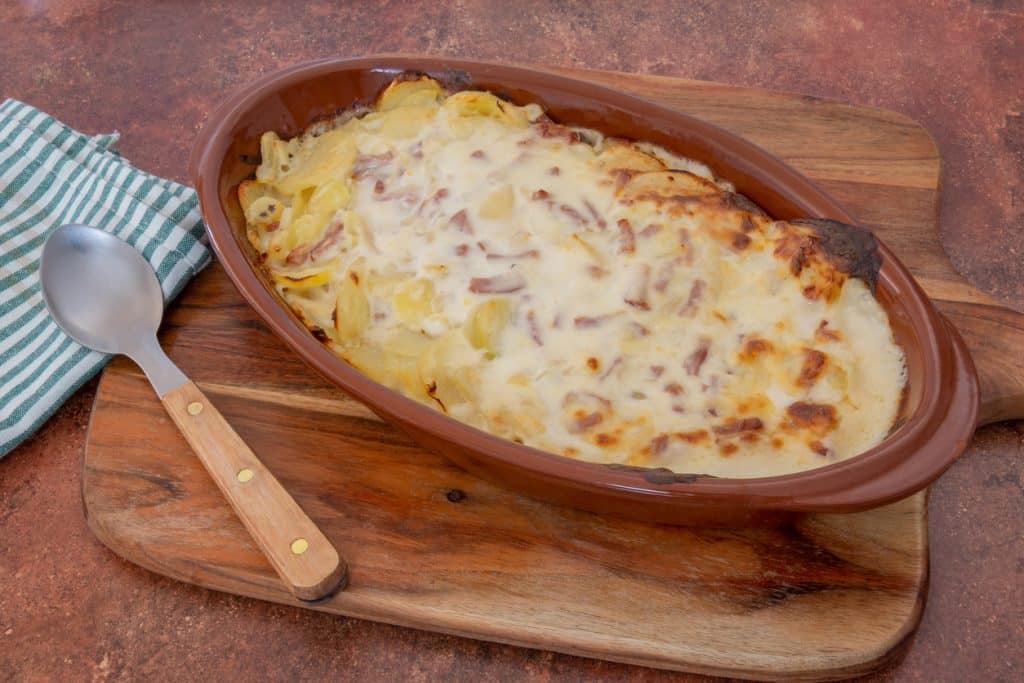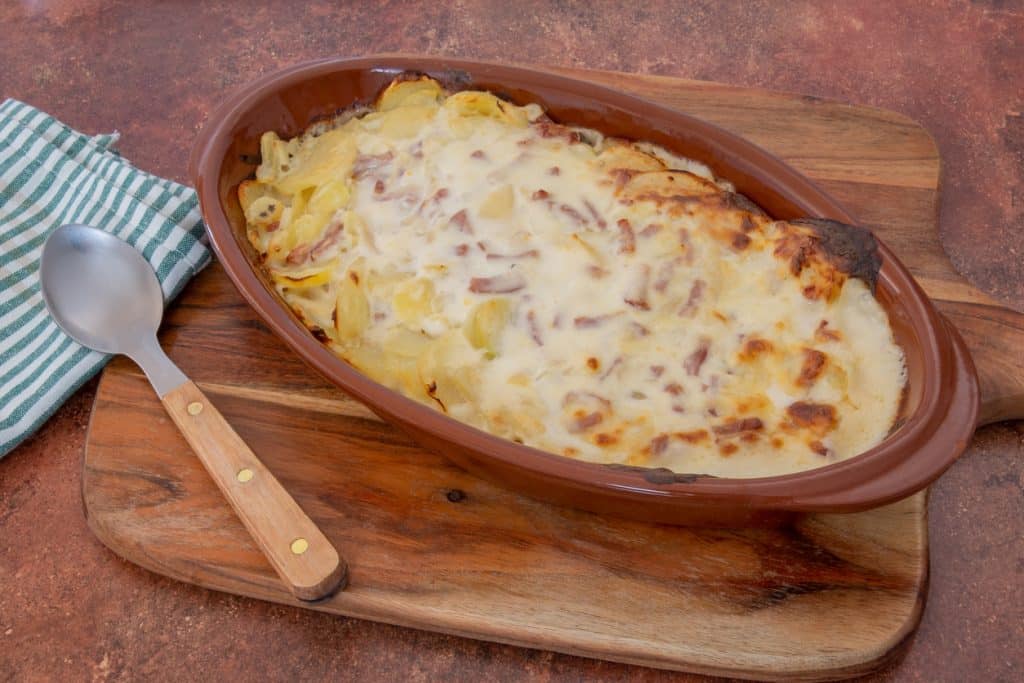Fans of Savoy cuisine are likely familiar with tartiflette, the comforting dish made from potatoes, bacon, and reblochon cheese. But did you know that this modern specialty has its roots in a traditional dish called péla? Let’s delve into the history and unique characteristics of this authentic dish.
Origins of the Péla
The péla is a dish that originates from the Aravis region in Haute-Savoie. Its name comes from the Savoyard patois, where “péla” refers to a long-handled skillet that was once used for cooking over a wood fire. This term is derived from the Latin word “patella,” meaning small pan. Historically, the péla was cooked in these specific skillets, which is how it got its name.
Composition and Traditional Preparation
Unlike tartiflette, which is more complex, the péla is known for its simplicity and straightforward preparation. The main ingredients are:
- Potatoes: cut into cubes, often with their skins on, and sautéed directly in the pan without boiling beforehand.
- Onions: finely chopped and sautéed with the potatoes to add a sweet, mild flavor.
- Reblochon: this iconic cheese from the Savoy region is added at the end of cooking, melting gently over the hot potatoes.
Traditionally, the potatoes and onions were cooked together in the péla (the skillet), and then the reblochon was added to lightly gratin the dish. This rustic meal was favored by farmers for its simplicity and ability to satisfy after a hard day’s work.
From the Péla to Tartiflette: A Culinary Evolution
In the 1980s, the Interprofessional Syndicate of Reblochon sought to promote this cheese by creating a recipe inspired by the péla. Thus, tartiflette was born, a modernized and enriched version of the traditional dish. The key differences include:
- Addition of bacon: not present in the original péla recipe, bacon adds a smoky flavor and additional texture.
- Precooked potatoes: in tartiflette, the potatoes are often boiled before being combined with the other ingredients.
- Oven baking: unlike the péla, which is fully cooked in a skillet, tartiflette is generally baked in the oven, resulting in a golden, appetizing crust.
This adaptation quickly gained popularity, becoming a staple in ski resorts and winter gatherings.
The Péla Today: A Return to Roots
With the growing interest in authentic recipes and homemade cooking, the péla is experiencing a resurgence. Its charm lies in its simplicity and genuine flavor. To prepare it at home:
- Ingredients:
- 1 kg of firm potatoes
- 2 large onions
- 1 farmhouse reblochon
- 2 tablespoons of oil
- Salt and pepper
- Preparation:
- Wash the potatoes thoroughly and cut them into cubes without peeling them.
- Chop the onions.
- In a large skillet, heat the oil and add the onions. Sauté them until they become translucent.
- Add the potato cubes and sauté over medium heat, stirring regularly, until they are golden and tender.
- Season with salt and pepper to taste.
- Cut the reblochon in half horizontally. Place it on top of the potatoes, rind side up.
- Cover the skillet and cook for a few minutes, until the cheese melts and coats the potatoes.
The péla is much more than just a recipe; it is a testament to an ancient Savoyard culinary tradition. By rediscovering it, we pay homage to the simplicity and authenticity of traditional dishes. So, the next time you’re thinking of preparing tartiflette, why not opt for its original version and savor a piece of history?


